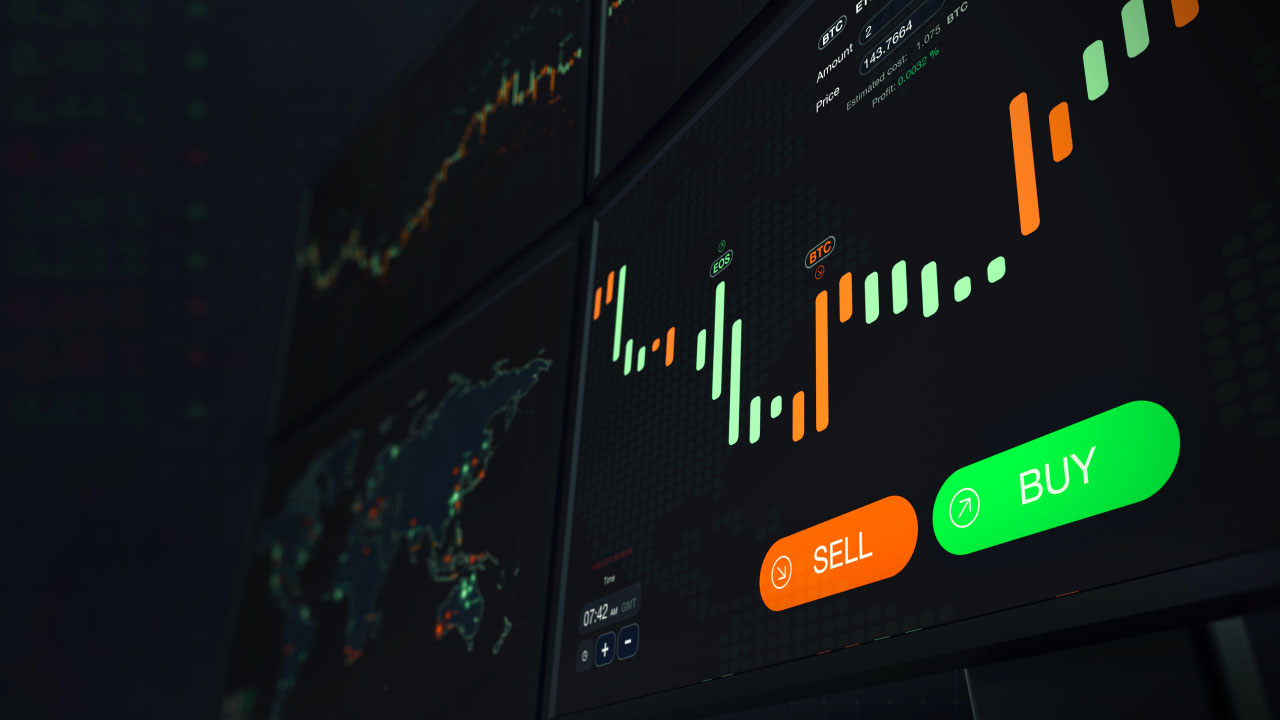Automated Trading Systems can offer increased trading efficiency, but also introduce risks due several factors including technical glitches, data inaccuracies, market anomalies, and algorithmic manipulation.
Understanding these risks is key for effective risk management, and we'll explore automated trading systems in this article.
What are automated trading systems?
Automated Trading Systems (ATS) are computer-based programs or algorithms designed to execute forex trading strategies on behalf of traders or investors. These systems operate without the need for constant human intervention, as they are programmed to analyze market data, identify trading opportunities, and execute trades based on predefined criteria.
ATS in forex utilizes various technical indicators, price patterns, and mathematical algorithms to make trading decisions. These systems can be as simple as executing basic trade orders based on specific conditions, or they can be highly complex, incorporating advanced strategies such as trend following, mean reversion, arbitrage, and more.
The benefits of using automated trading systems in forex include the ability to trade 24/5 without requiring constant human monitoring, the potential to execute trades at high speeds, and the elimination of emotional biases that can influence human decision-making.
However, along with these advantages, there are also significant risks to consider:
- ATS can cause losses if algorithms fail to adapt in volatile forex markets or due to technical glitches.
- Over-optimized strategies and improper risk management can lead to financial setbacks.
- ATS may not be able to provide personalized trading strategies
Therefore, traders and investors need to be aware of these risks and exercise caution when using automated trading systems in the forex market.
Risks of automated trading systems
Over-optimizes strategies
Over-optimization occurs when a trading system is tailored too precisely to historical market data. This optimization might lead the system to perform exceptionally well during backtesting, but it can falter in real-world trading due to dynamic market conditions.
For instance, consider a system that performs well during periods of low volatility but struggles during unexpected economic announcements that induce high volatility. This happens because the historical data didn't account for such unique events, rendering the strategy ineffective. Traders must strike a balance between adapting to past data and remaining flexible for future uncertainties.
Creates illegible trading systems
Automated trading systems often incorporate multiple technical indicators, complex rules, and intricate decision-making algorithms. While these systems can be powerful, their complexity can sometimes provide unclear outcomes.
For example,let's consider an automated system with a complicated set of conditions for entering or exiting trades. When unexpected market movements occur, traders might find it challenging to discern why the system made a particular decision. This lack of transparency not only impedes trading oversight but also hampers the ability to diagnose issues and fine-tune strategies.
Experiences technology and mechanical failures
Automated trading systems rely heavily on technology, coding integrity, and uninterrupted connectivity. A single technical glitch or mechanical failure can disrupt trade execution and result in unintended financial consequences. For instance, a sudden network disruption during a crucial market event might prevent an automated system from executing a trade at the desired stop-loss level, potentially leading to larger losses than anticipated. Such disruptions underscore the vulnerability of automated systems to external technical factors.
Amplifies systemic risk
High-frequency trading (HFT) algorithms execute numerous trades in fractions of a second, amplifying market movements.
While automated systems can generate gains, they also have the potential to trigger severe market disruptions that can affect the broader financial ecosystem. This phenomenon highlights the need for cautious deployment of high-frequency trading strategies.
Limits opportunities for high-frequency trading
Automated systems can perform a high volume of trades in a short span. However, in rapidly changing markets, the speed of execution might not be sufficient for high-frequency trading. For example, a system programmed to capitalize on small price fluctuations might struggle to keep up with the pace of market movements during particularly volatile periods. The resulting delay can lead to missed trading opportunities and potential revenue loss.
Balance the benefits and risks of automated trading systems
While automated trading systems offer benefits, such as increased efficiency and reduced emotional biases, they might manipulate traders' decisions in the forex market. Traders must carefully assess the potential benefits against the risks, acknowledging that effective utilization requires a thorough understanding of strategy development, continuous monitoring, and robust risk management practices.
By keeping in mind the risks associated with ATS, traders can utilize the power of automated trading systems, ensuring their alignment with financial goals while mitigating potential adverse outcomes.
Sign up for a live account or try a demo account on Blueberry. today.
Disclaimer: All material published on our website is intended for informational purposes only and should not be considered personal advice or recommendation. As margin FX/CFDs are highly leveraged products, your gains and losses are magnified, and you could lose substantially more than your initial deposit. Investing in margin FX/CFDs does not give you any entitlements or rights to the underlying assets (e.g. the right to receive dividend payments). CFDs carry a high risk of investment loss.




